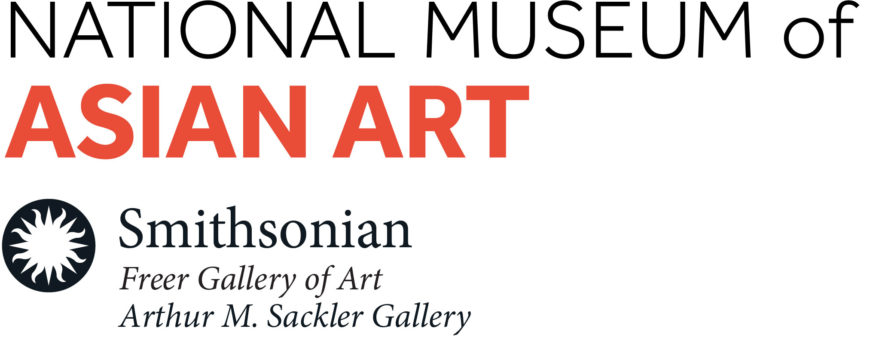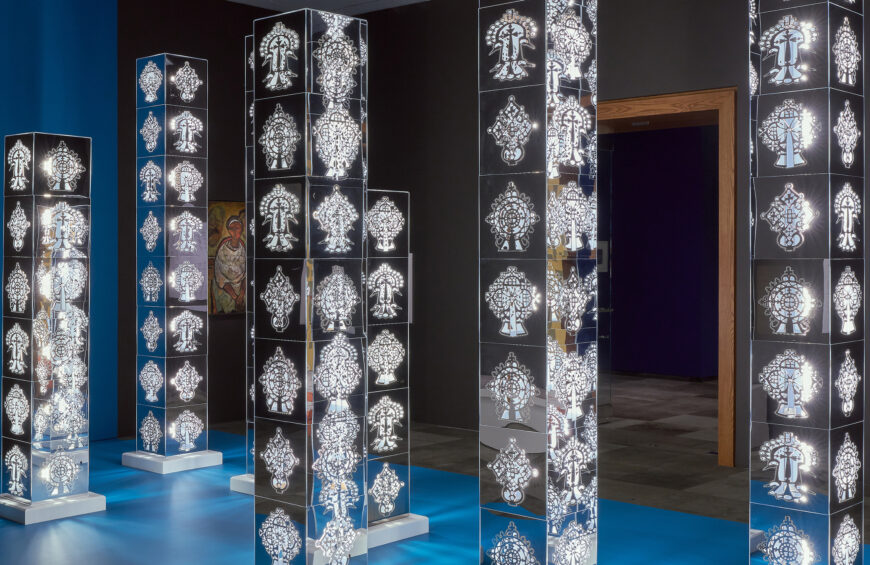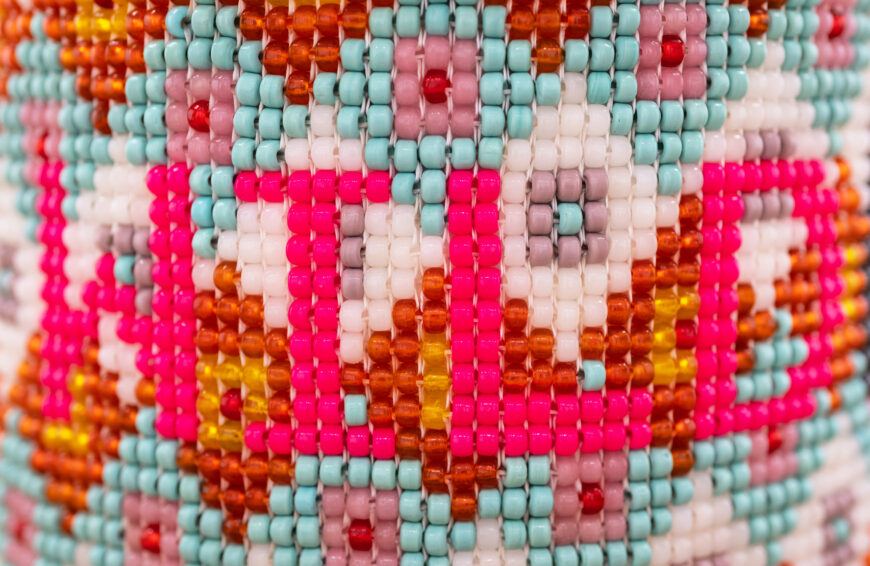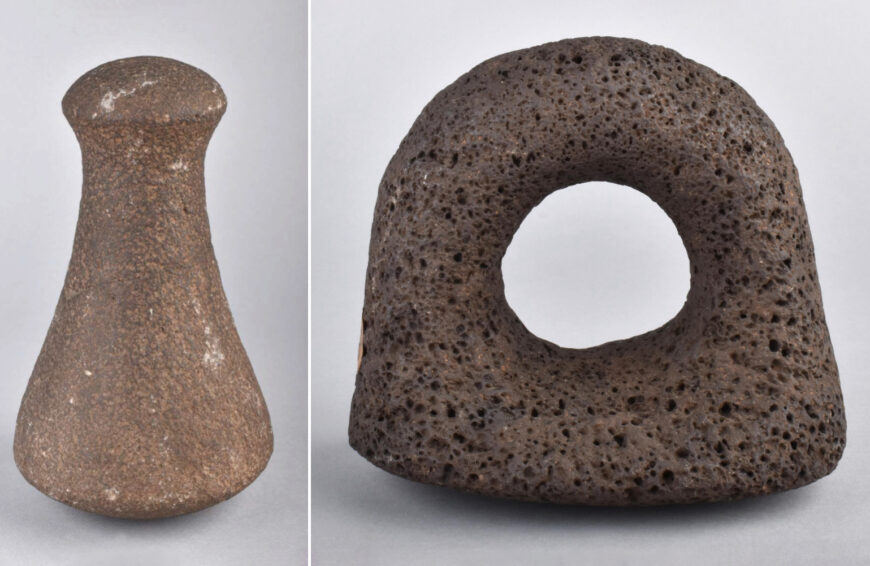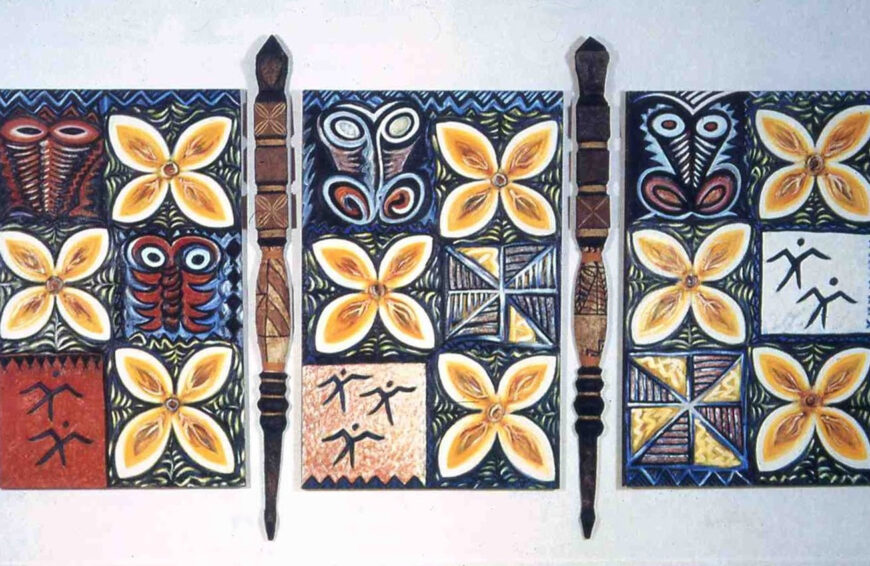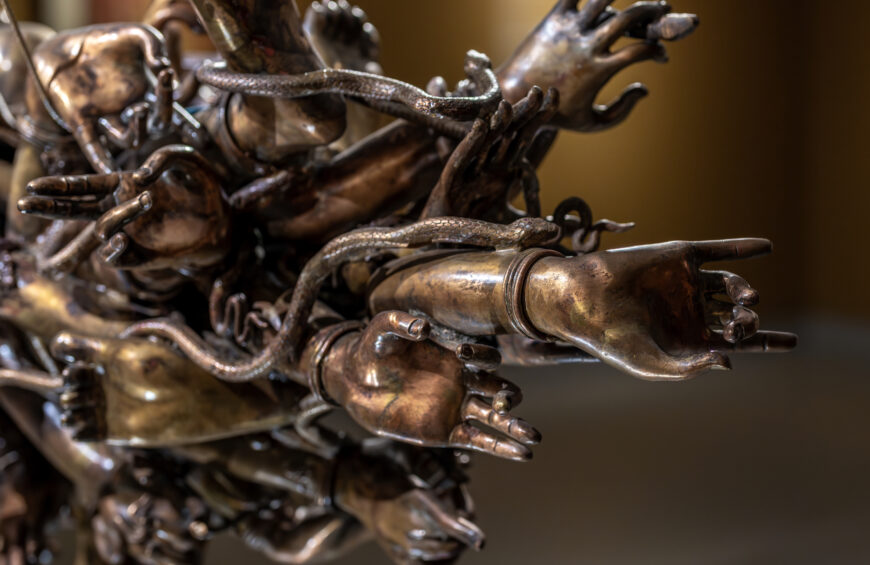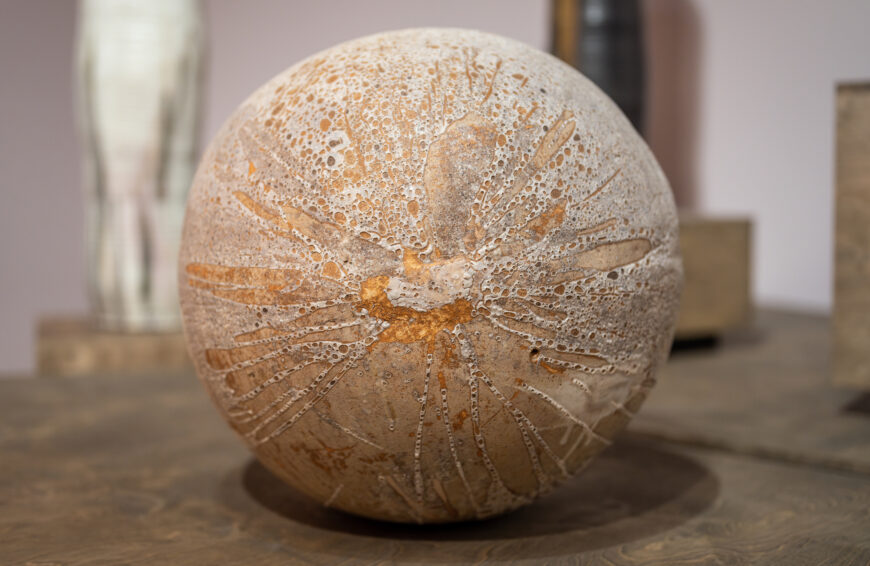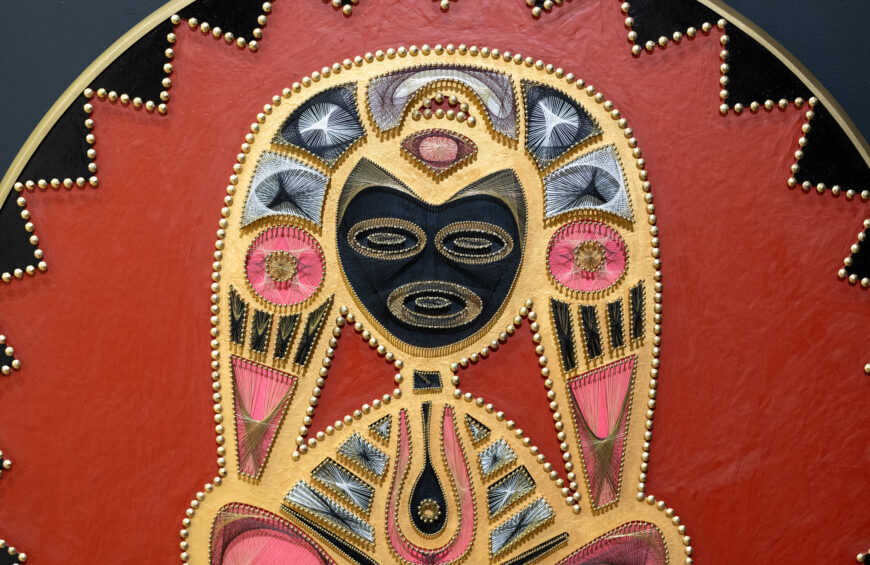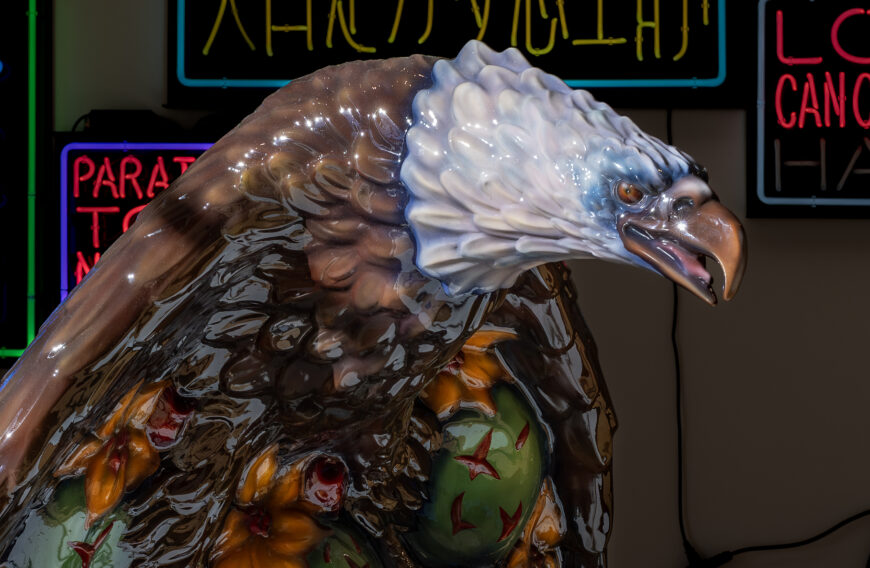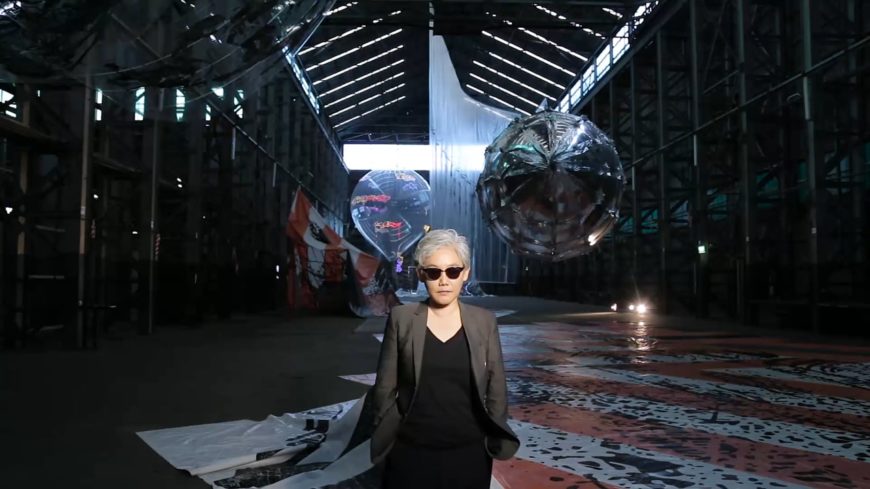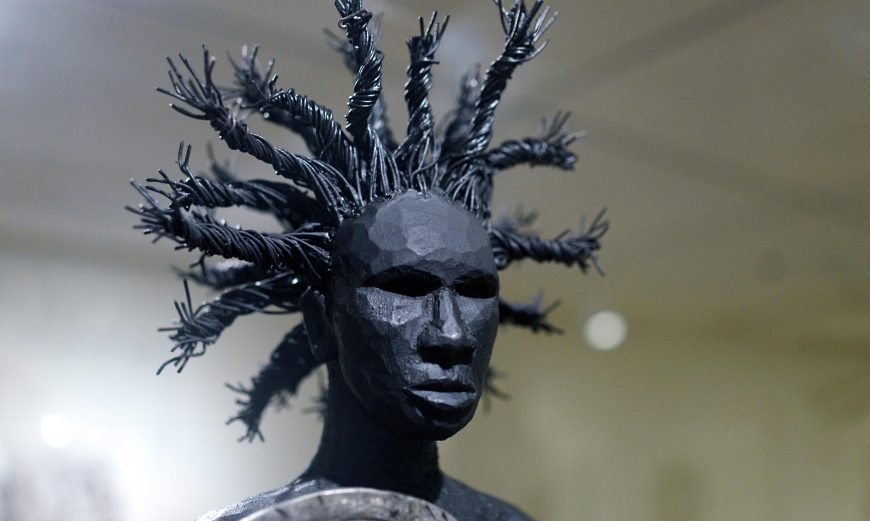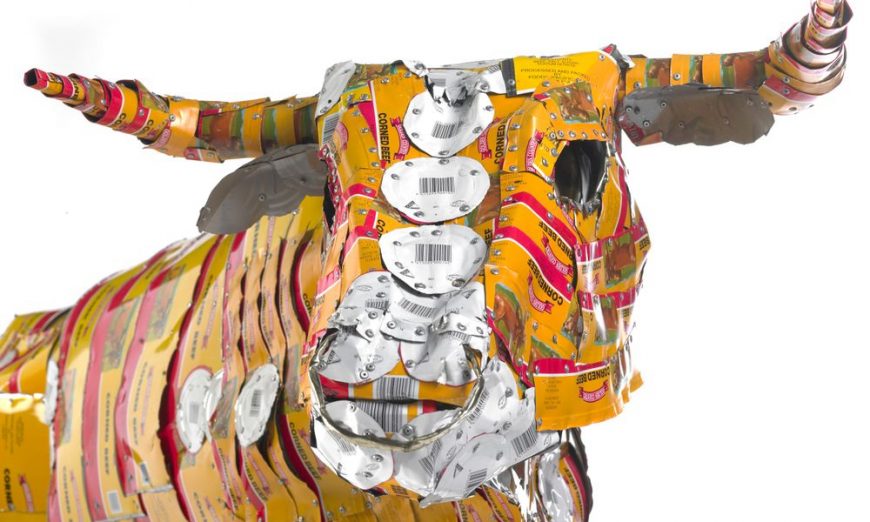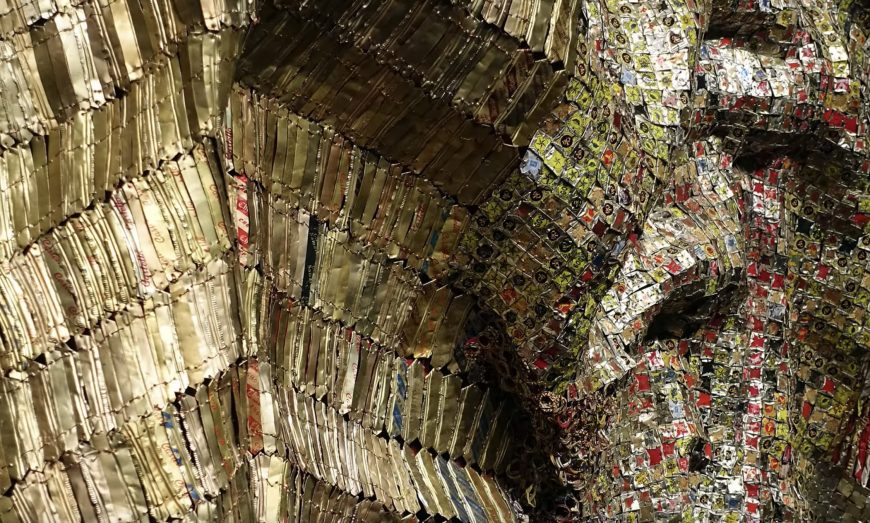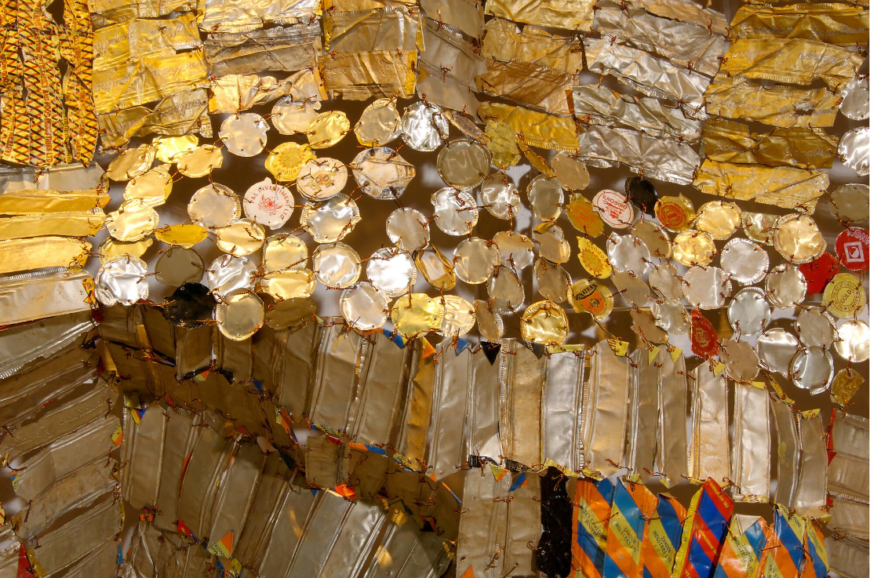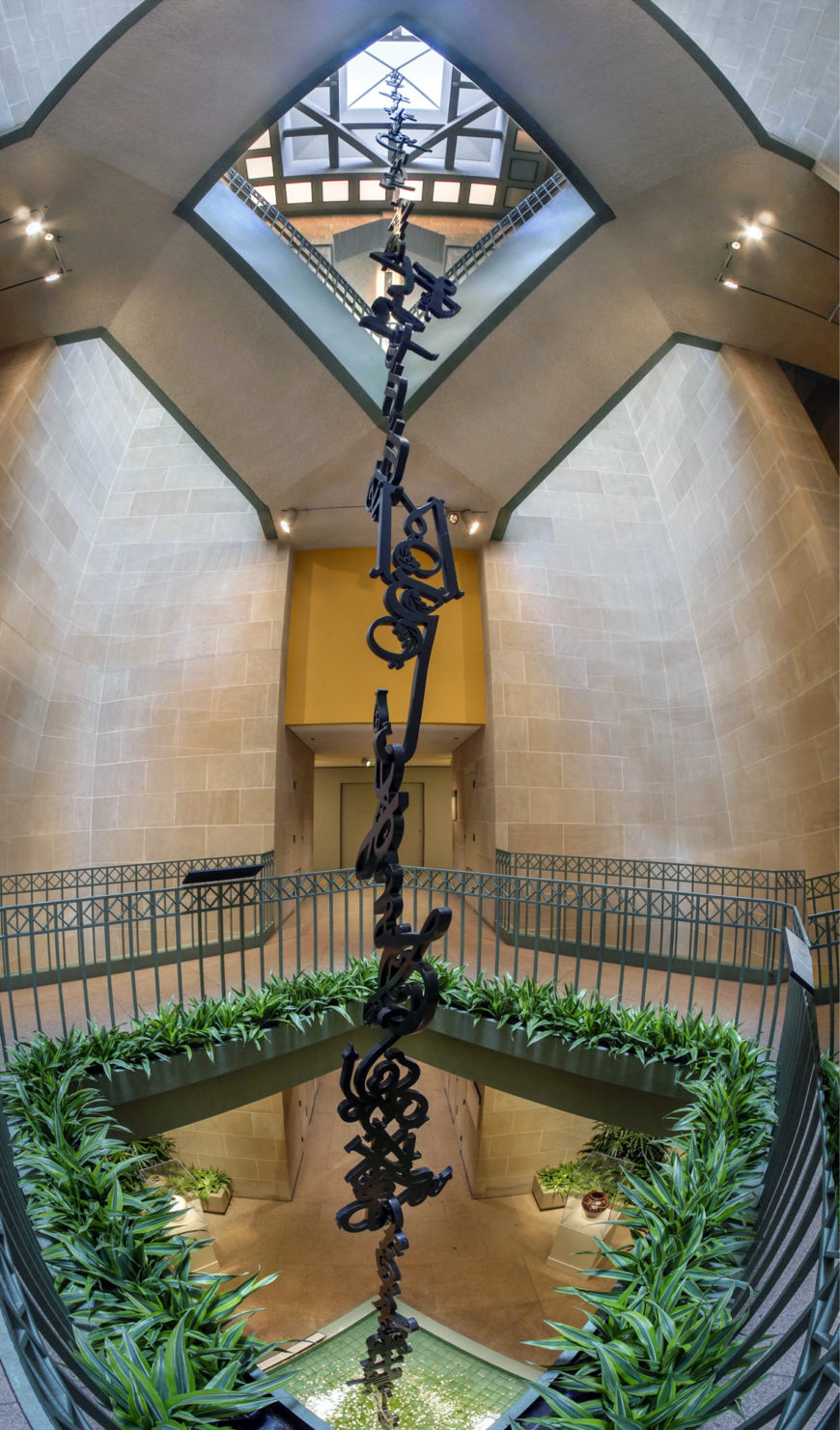
Xu Bing (born 1955; active United States), manufacturer: Smithsonian Institution Office of Exhibitions Central, Monkeys Grasp for the Moon, 2001–2004, lacquer on Baltic birch wood, China, 2591.1 x 78 x 4.1 cm (Arthur M. Sackler Gallery, Smithsonian Institution, Washington, DC: Purchase — funds provided by the family of Madame Chiang Kai-shek (Chiang Soong Mayling 1898–2003), S2004.2.1-21)
Monkeys Grasp for the Moon is an installation artwork, which means it is site-specific and three dimensional. Twenty-one laminated wood pieces complete the work. Each one is a representation of the word “monkey” in one of twenty-one languages and writing systems, including English, Chinese, Japanese, Indonesian, Thai, Hebrew, and Braille. The words are shaped to resemble monkeys. They are stretched at the beginning and end of the words to form long tails and arms that link together. The linked words flow from the sky-lit atrium through the gallery’s stairwell and down to the reflecting pool on the bottom level. Designed specifically for the Arthur M. Sackler Gallery of Art’s main staircase, this version of the artwork merges perfectly with the gallery space.
The artwork is based on a well-known Chinese folktale about a group of monkeys attempting to capture the moon. They were playing in the trees when one monkey looked down into a well and saw the moon in the water. Worried that the moon had fallen, he called his friends to help. Linking arms and tails, the monkeys form a long chain reaching from the branch of a tree to the moon, only to discover that it is a shimmering reflection on the surface of the water.
The artist Xu Bing is one of the most important Chinese artists working today. He grew up surrounded by books at Beijing University where both his parents were professors. In 1990, Xu relocated to the United States. Finding himself in a new and unfamiliar place, he began to consider language and his fascination with word forms. Monkeys Grasp for the Moon is a product of this background, in which Xu combined western and eastern esthetics, mythology, and contemporary expression. It playfully comments on notions of communication and interaction through cultures, traditions, and artistic styles.


